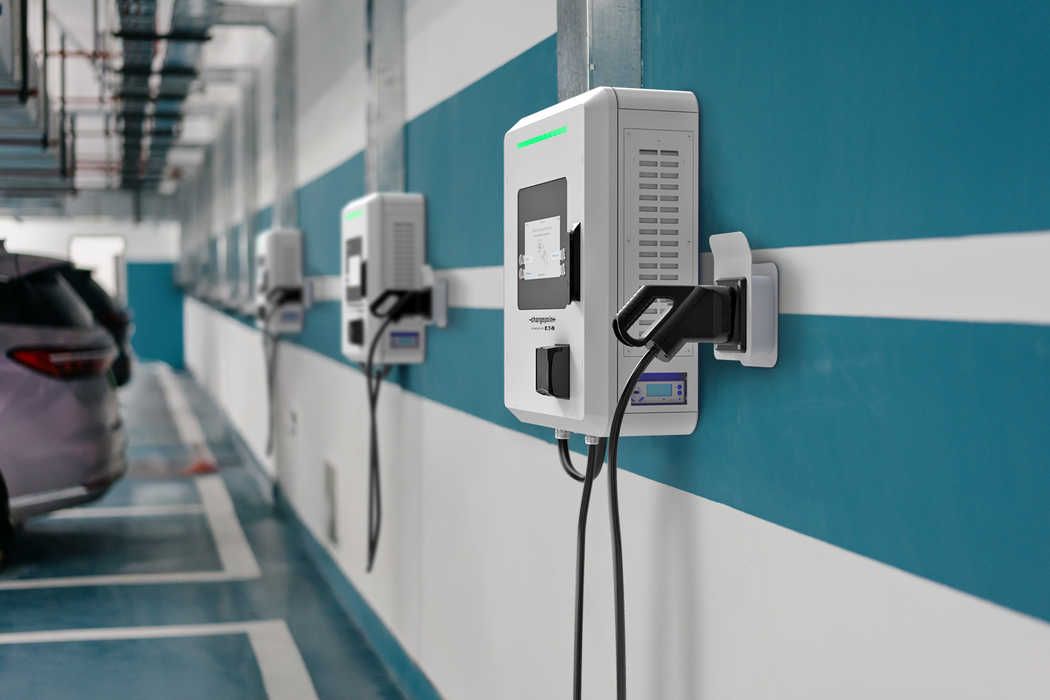Buildings as Energy Centers
The new products are part of the concept “Buildings as a Grid,” through which Eaton aims to turn buildings into intelligent energy centers. This concept combines on-site power generation, storage and consumption to use energy more efficiently. According to the company, operators can thereby increase their self-consumption while also generating revenue from charging processes.
Bidirectional Charging and V2G Functionality
The DC 30 is a fast charging station with a charging capacity that is particularly suitable for fleets, public parking spaces, and destinations such as supermarkets. The device meets the requirements of the EU Regulation for Alternative Fuels (AFIR) and supports common, registration-free payment methods. The manufacturer particularly emphasizes the bidirectional charging capability. This enables vehicles not only to draw energy but also to feed energy back into the grid – a contribution to Vehicle-to-Grid (V2G) integration.
Two Charging Points in a Compact Space
The second novelty, the Station Duo, can charge two vehicles simultaneously, each up to 22 kilowatts. It is available for wall-, floor-, or ceiling-mounted installations and is aimed at locations where space is limited – for example in underground garages or corporate parking lots.
Both systems feature dynamic load balancing designed to prevent grid overloads. They are ISO 15118-compliant, and the integrity of their life-cycle assessment is confirmed by Eaton through an Environmental Product Declaration (EPD). Through remote software updates and integration with Eaton’s remote monitoring platform, issues can be quickly resolved and uptime maximized.
Faster installation through modular construction
The new charging systems are suitable for both indoor and outdoor use. Eaton emphasizes that they can be put into operation about 25 percent faster than conventional charging stations thanks to standardized installation processes. The modular design reduces the need for additional components and thus shortens installation times. For both products, the provider offers warranties as well as Europe-wide service through its own partner networks.
Eaton at Energy Transition Europe 2025
The new systems were presented on October 20 and 21, 2025 at the Reuters-organized conference Energy Transition Europe in London. There, Jean Miyeli, General Manager Energy Transition at Eaton, delivered the keynote entitled ‚Navigating the Energy Transition: Balancing Short-Term Crises with Long-Term Vision.‘ The focus was on the partnership with ChargePoint and current projects for integrating renewable energy into corporate structures.
What does that mean?
With the introduction of the DC 30 and Duo models, Eaton is responding to the rising demand for flexible, networked charging points in commercial fleets. In particular, the V2G capability shows that the company wants to link the energy and mobility transition more closely. This means additional options for load management—but at a time when V2G concepts still have to prove themselves in practice.
The accelerated installation and integration into existing building structures speak in favor of a pragmatic implementation. Nevertheless, it remains open how the systems will be economically viable on a broad scale, especially for smaller fleets. Eaton’s approach to thinking of charging infrastructure as part of energy management follows a clear trend—whether it will, however, become a standard for corporate charging environments depends on practical acceptance. (av, Source: Eaton)
Translated automatically from German.
